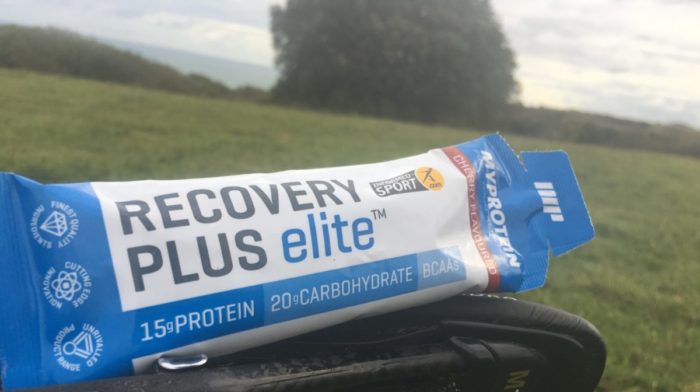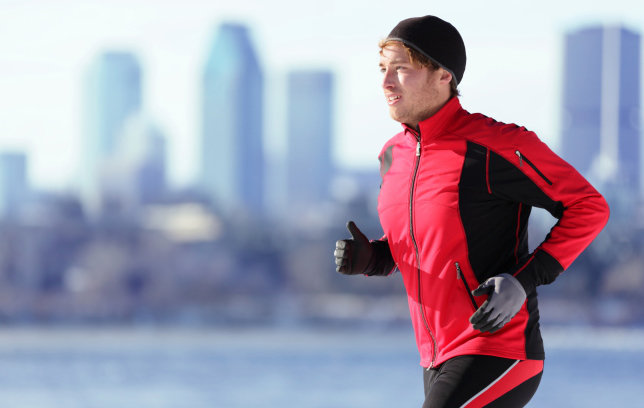If you’re after a bit of cross-training this winter, then running is a great alternative to cycling that will increase your fitness level significantly. From doing a steady run a couple of times a week instead of a risky dark-evening cycle after work, you’ll see the benefits of (a) physical fitness and (b) letting your legs stretch out and maximise your muscle movement as your hamstrings and quads are limited when constantly bent whilst riding. But going out for a run is just as hard to get motivated for in the winter as cycling is. It’s freezing outside, it’s dark and the warmth of your home is too tempting to stay. But we all need to stop making excuses, and get our trainers on because although it’ll be tough, going out running in the cold will do a world of wonders to fitness!
How to Master Running in the Cold:
-
Wear Warm Clothes
Before you leave the house, make sure you’ve got the right type of running clothing to contain your body heat. It’s quality, not quantity! Don’t make the mistake of wearing too many layers as you will soon get too hot despite the frosty weather, which will slow you down and put you in a lot of bother. It’s really up to the individual and how tolerate you are to the cold.
A simple base layer will keep your body warm, allow your skin to breathe and also help with circulation whilst you exercise. Wear this under a running jacket (to protect you from the wind and rain) and you’ll have the perfect temperature regulation for your run.
I would opt for running tights rather than shorts in this instance, to keep your legs warm and dry and depending on how cold it is (or how much tolerance you have against it!). Some may get away with wearing a short sleeved running top, but there are also plenty of long sleeved ones out there too that will keep you cool with mesh-like materials to ensure you stay dry when you over heat and sweat. Try and get some reflective clothing in there too as running in winter tends to be quite dark, especially in the evenings and early mornings!
Depending on how cold it is as well, you may want to consider keep your hands and ears warm as I have found that these get hit by the wind the most! You can use some cycling gear for these, PBK has a selection of gloves and head wear that’ll come in useful both running in the cold and on the bike!
The cold can't catch me. I am Not Made for Normal. #Climaheat
A photo posted by adidas Running (@adidasrunning) on Oct 14, 2016 at 7:30am PDT
-
Warm Up
It’s essential that you go through a good warm up before heading out to complete a few miles out running. Warming up properly gets the blood flowing and circulation around your muscles which firstly gets them ready for a longer duration of exercise by loosening them up and preparing them for movement, and secondly to prevent any injury.
I’d suggest a simple steady pre-run lap of the park or down to the end of the road and back – no need to do much longer than a mile. You should then follow with 10 to 15 minutes of dynamic stretching to get your muscle movement maximised.
You’re then good to go!

5 Ways for Cyclists to Improve Circulation
Circulation plays a vital part in enabling your muscles to perform to the best of their ability. Whilst exercise helps, high intensity training can also make the legs swell and circulation can become restricted. Eliminate muscle cramps, sore muscles and recovery with compression clothing from ProBikeKit.
-
Keep a Consistent Pace & Easy Route
In winter, running training is less about speed and more about consistency. If you keep a steady and regular pace you will benefit more as what you want to do to increase your fitness during this winter season is up your mileage!
Choose a route that isn’t too difficult (terrain or gradient) that you can maintain the pace at – a flat loop around a park is perfect, or a run around a few blocks. If you’re aiming to log the miles, then it may be wise to run a figure of eight or over lap somewhere that you can cut it short just in case you begin to struggle – there’s nothing worse than being too far away from home in the cold!
Adding a hill or two to your route wouldn’t be an issue, it’s usually good to get a hill in there to work your muscles and build a bit of leg strength, and you’ll have to work harder to maintain your pace.
Get yourself a handy Garmin to keep track of your route, pace and mileage amongst other things.
Every accomplishment starts with the decision to try. #BeatYesterday ?: @mellank
A photo posted by Garmin (@garmin) on Oct 26, 2016 at 2:40pm PDT
-
Cool Down
Runner cool down to prevent injury. The aim of this isn’t to get cold, but to relieve your muscles and calm them down a little bit!
I’d go with taking the same lap (or route) as your warm up with an added layer – a jumper or jacket perhaps – so that you keep your body warm whilst you slow the pace down. Jogging at a very steady pace, you can even throw in some dynamic stretches in there. A quick flick of your foot to your heel, alternating sides, or a few stretching side steps, just to loosen your muscles further after they’ve been working for a while in the cold. You should take the stretching further at home, and do some static stretches sat on the floor to get your leg muscles completely relaxed. The main one is your calf muscle – that might be a bit sore if you aren’t used to running! And if you have a foam roller, use it!

Stretches for Cyclists
Stretching is essential to loosen your muscles and recover. The looser they are, the more dynamic and comfortable you will be in movement, and therefore the better your cycling performance! Follow our handy guide for the best ways to stretch your muscles.
-
Recover from the Cold!
As soon as you get in from running in the cold, change your clothes! That change from cold and damp to warm and dry is a God-send and will prevent any illness from taking its toll.
I usually jump straight into the shower to wash off any sweat and to generally warm up. I then throw on my pair of compression socks for my calves (as I often suffer from shin splints), eat a hearty dinner, and then wrap up in a thick blanket on the sofa with a cup of tea!
If you want to take it a step further, you can have a go at some recovery protein bars or gels to get some nutrition added to your exercise and replenish and strengthen your muscles even more.

Cycling Nutrition Plan
Cyclists require a lot of energy to endure their intense training regimes, and this cannot be done without a well-thought out nutrition plan. We have teamed up with the sports nutritionists over at Myprotein to help you structure your diet around training so that you get the best from the hours of tough work on the bike.
We have introduced a tonne of running gear to ProBikeKit, so why not start your cross-training today and get into running? We’ve got the gear, you’ve got the run!
Feature image source: http://www.active.com/

